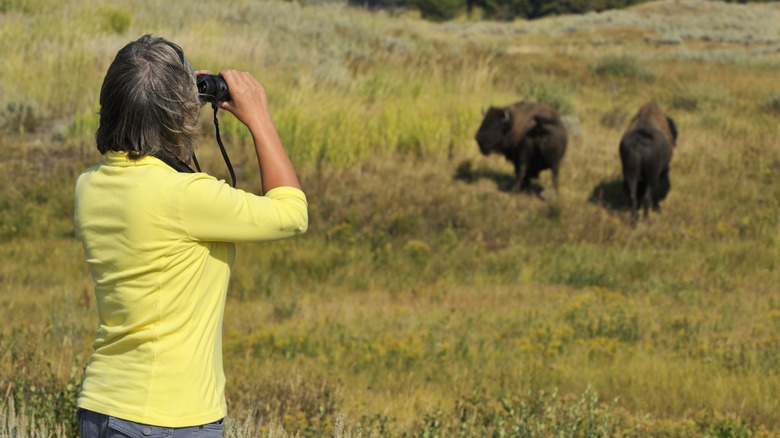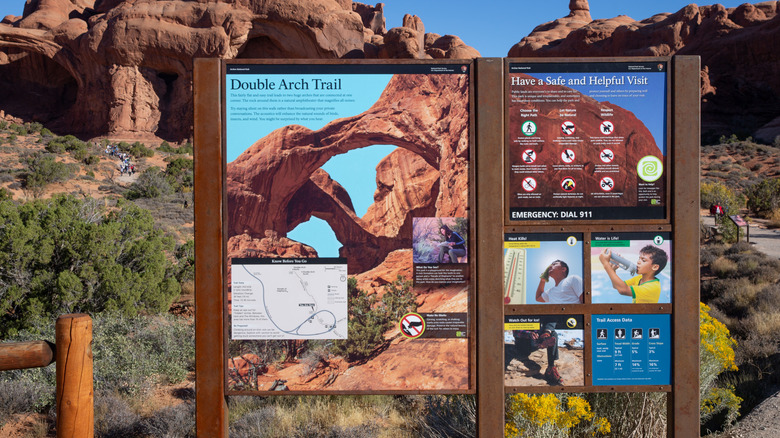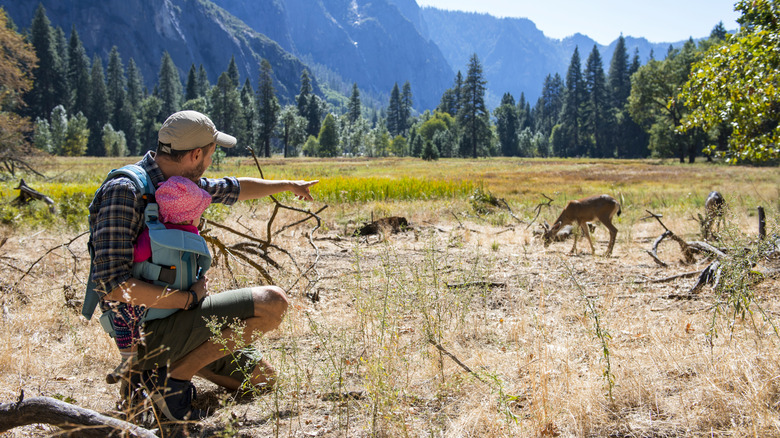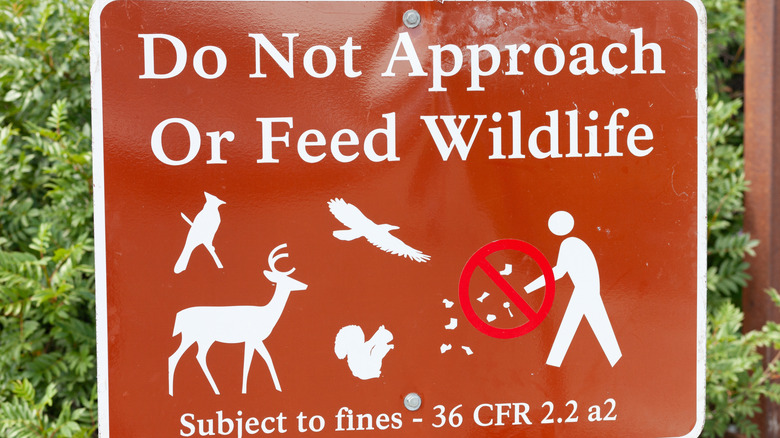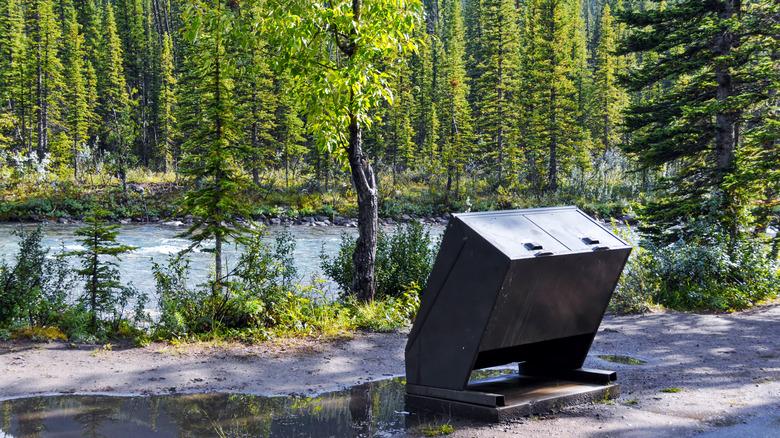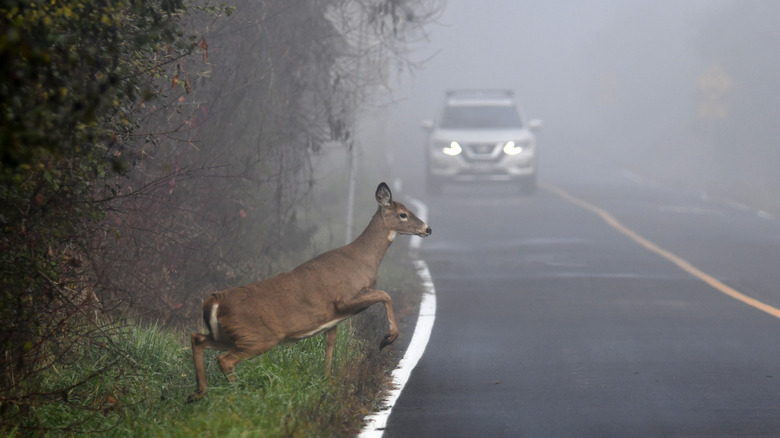Our Tips To Stay Safe On Your Next Wildlife-Watching Adventure
We may receive a commission on purchases made from links.
Wildlife watching across America has become increasingly popular. According to The Wildlife Society, close to 150 million Americans take close to two billion trips each year, spending a combined 14 billion days outdoors in attempts to catch a glimpse of various wild animals. While wildlife watching sounds like a relatively risk-free outdoor activity, there are actually some perils involved.
Even when aspiring to view harmless species such as song birds, there is a litany of potential hazards involved with adventuring in often rugged terrain. Traveling to national parks for bear-watching or viewing other large mammals adds the inherent danger of putting yourself within sight of creatures that are known to be predators. Even some small animals are dangerous, despite appearing cute and harmless.
With this in mind, there are steps you should take to stay safe on your next wildlife watching adventure. For starters, it is necessary to take precautions to prevent becoming lost in the woods or falling victim to the heat exhaustion, hypothermia, or other dangers presented by harsh outdoor environments. There are also steps that should be taken to avoid a hostile encounter with the animals you are likely to encounter while on an wildlife viewing excursion.
Be aware of wildlife in the area, as well as rules and regulations
Before heading afield for a wildlife viewing outing, it is important to be familiar with the creatures you may possibly encounter. This applies not just to the animals you are hoping to see, but other critters that may be in the same area, including some you may be hoping to avoid. It is also critical to know what to do if you encounter any of them. For instance, even if you are on a bird-watching mission, it is important to understand what to do if you come across a rattlesnake if you are adventuring in the American Southwest.
Furthermore, if you are heading into a national park or forest, state park, or other similar space, you should be familiar with the rules and regulations. Rules ranging from operating hours to minimum distances you should stay from wild animals are typically posted on websites so that you can familiarize yourself with these regulations ahead of time. Most parks also have these rules and regulations posted at the park office and near entrances and trailheads. It is also necessary to apply for any permits you may need for additional activities, such as camping or backcountry hiking, for instance.
Always stay a safe distance away from animals
One of the most universal pieces of advice for avoiding aggressive encounters with animals is to stay a safe distance away from them. This holds true whether you are attempting to observe the creature or accidentally run across it while hiking. The National Park Service, U.S. Fish & Wildlife Service, U.S. Forest Service, and other agencies publish suggested guidelines for the parks and properties they manage. These same guidelines can be used wherever you happen to be, even if it isn't in a managed park.
A good rule of thumb is to stay at least 25 yards away from all animals and at least 100 yards away from dangerous or predatory species such as bears, wolves, and mountain lions. This distance will typically be enough cushion to prevent the animal from becoming agitated and gives you a bit more reaction time if it does become aggressive. If you are ever unsure whether you are too close or if the animal moves closer, play it safe and move further away.
Of course, the entire purpose of a wildlife viewing expedition is to watch wild animals. Remaining at such a distance may seem as if it is a hindrance to this. However, it actually allows you to view the animal acting naturally and going through its normal routine. By utilizing gear such as the Nikon ProStaff binoculars, you will be able to observe the animal in detail without sacrificing the safety of distance.
Do not disturb, antagonize, or feed animals
In addition to staying a safe distance away, it is critical not to intentionally disturb, antagonize, or harass wild animals. This also includes not disturbing nesting or bedding areas. While this may seem to be common sense and basic in terms of respect towards wildlife, it is, unfortunately, not uncommon for people to try to incite a reaction from animals or attempt to hold, pet, or feed them. However, not only does this behavior increase the risk of injury for both people and animals, it is illegal.
Ways to avoid disturbing wildlife include staying on the trails and keeping dogs or pets on a leash, as they can frighten wildlife or, worse, incite aggressive behavior from other animals. Additionally, even if you come across animals that do not flee, you should never attempt to approach or handle these creatures. This includes any animal you may suspect of being sick or injured. If you have a concern about the safety of an animal, you should contact a park ranger or wildlife officer and allow them to address the situation.
Feeding animals is a no-no. This behavior not only draws animals within an unsafe distance, it habituates them to humans. As a result, wild animals can begin to associate humans with a free meal, causing them to approach people and, at times, leading to more aggressive behavior and an increased risk of attack.
Properly store food and trash
Even without intentionally attempting to feed wildlife, not properly storing food and trash is a mistake that can attract dangerous animals to campsites, picnic areas, and other places frequented by people. Just like feeding animals, this causes creatures to associate people with food. Again, this increases the risk of aggressive behavior or attack by the animal. So, whether on a day trip or overnight excursion, proper food storage and cleanup is critical for a safe outing.
Food should always be carried and stored in airtight containers so as not to attract animals. This applies to leftover food and trash as well. The majority of managed parks and campgrounds have wildlife-proof trash receptacles. You should always utilize these containers if they are available. If such trash bins aren't available or you are deep in the backcountry, pack your trash in airtight containers. Additionally, you should be sure to clean your food prep, cooking, and/or eating areas thoroughly, as even the smallest bits of food can attract animals.
Watch where you're going
Whether traveling on foot or in a vehicle, it's crucial to be aware of your surroundings. Surprising animals such as mountain lions or bears can create a potentially dangerous situation. For this reason, it is recommended to make noise while hiking to alert these animals to your presence. However, when on a wildlife viewing outing, it is important not to make so much noise as to scare away animals you are intending to see. Additionally, once you settle into your viewing spot, you should remain quiet so that birds or animals are more likely to enter an area where they can be seen.
Accidents between vehicles and animals (which is what the National Park Service terms as vehicle strikes) are among the most common reasons for fatalities of both people and wild animals. This is actually why deer are responsible for the most animal-related deaths in the U.S. These incidents can occur while driving to your destination or while attempting to view animals from driving trails. So, anytime you are driving in an area known to have active wildlife, it is important to keep your eyes on the road and be well aware of your surroundings.
